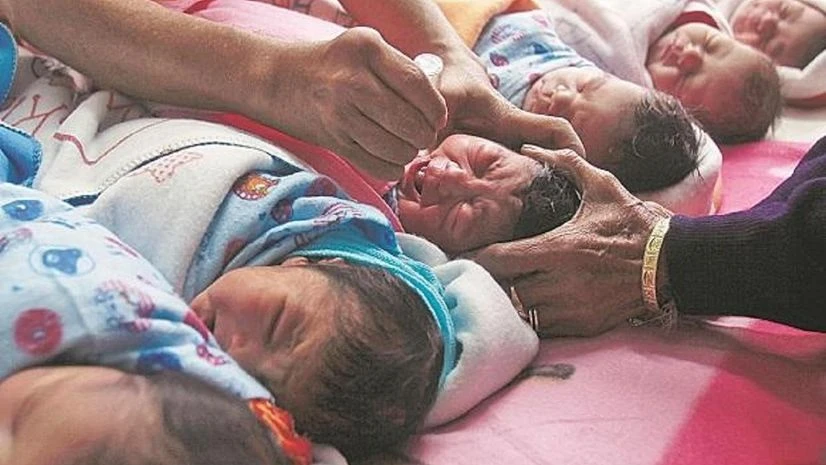)
The number of zero dose children in India account for 0.11 per cent of the country’s total population: Health Ministry
The Union Health Ministry on Thursday said media reports stating that India has a high number of ‘zero dose children’, who did not receive any vaccine, in comparison to other countries based on UNICEF report depicts an incomplete picture of the country’s immunization data.
The ministry said they do not factor in the population base and immunization coverage of the countries compared.
The accurate and complete narrative of the immunization efforts of the government can be gauged through comprehensive understanding of the relative data and programmatic interventions, the ministry added.
The percentage coverage for all antigens in India is higher than the global average.
In India, for most of the antigens, the coverage is more than 90 per cent, which is at par with other high-income countries such as New Zealand (DTP-1 93 per cent), Germany and Finland (DPT-3 91 per cent), Sweden (MCV-1 93 per cent), Luxembourg (MCV-2 90 per cent), Ireland (PCV-3 83 per cent), United Kingdom of Great Britain and Northern Ireland (RotaC 90 per cent).
Even if India’s coverage of 83 per cent is compared for Pneumococcal Conjugate Vaccine (PCV), which falls at the lowest bracket, it is much higher than the global figures of 65 per cent.
Among the compared countries, India is the only country having DTP-1 (Penta-1) coverage above 90 per cent and dropout children i.e., those that receive a first but not the third dose of DTP (Penta), are 2 per cent whereas this gap is much wider in other compared countries. These figures are clearly reflective of focused programmatic interventions in the country within the folds of its wide socio-geographically diversity, the ministry said in the statement.
The number of zero dose children in India account for 0.11 per cent of the country’s total population, it stated.
These statistics reflect the unwavering commitment of the Government to continuously increase the scope and reach of the immunization program of the nation.
The country’s Universal Immunization Programme is the largest public health initiative, targeting a massive cohort of 2.6 crore children and 2.9 crore pregnant women annually through 1.2 crore vaccination sessions.
The Full Immunization Coverage for FY 2023-24 stands at 93.23 per cent nationally. With consistent efforts to reach and vaccinate all eligible children against vaccine preventable diseases, the country has been able to achieve a noteworthy reduction in the Under-5 Mortality Rate (U5MR) declining from 45 per 1000 live births in 2014 to 32 per 1000 live births (SRS 2020).
In addition, India has widened the basket of vaccines with the introduction of six new vaccines under the UIP to increase breadth of protection since 2014, the statement said.
To reach out to zero dose and under vaccinated children, India has implemented initiatives under Mission Indradhanush and Intensified Mission Indradhanush with the support of the States. This has resulted in the reduction in the number of zero dose children by 34 per cent between 2014-2023.
Since 2014, 12 phases of Mission Indradhanush have been conducted across all districts wherein 5.46 crore children and 1.32 crore pregnant women have been vaccinated across all phases.
India provides maximum number of WHO recommended vaccines under the UIP in comparison to most of the other countries. The mean coverage for India is 83.4 pc, which is more than 10 percentage point of the global coverage.
With high level of coverage of OPV and IPV, India has successfully maintained 13 years of polio-free status since the last polio case was detected in 2011.
(Only the headline and picture of this report may have been reworked by the Business Standard staff; the rest of the content is auto-generated from a syndicated feed.)
First Published: Jul 18 2024 | 11:28 PM IST


































